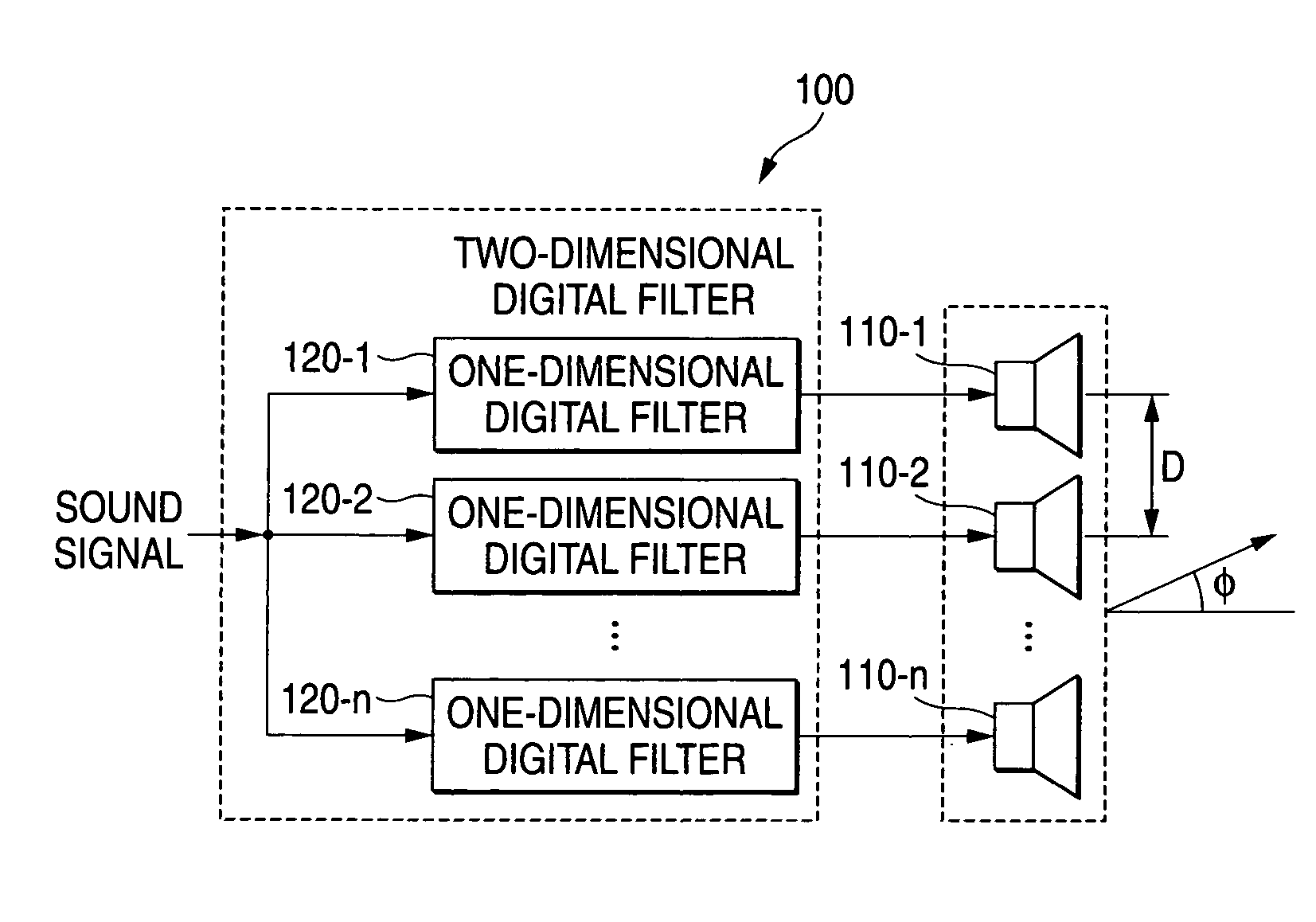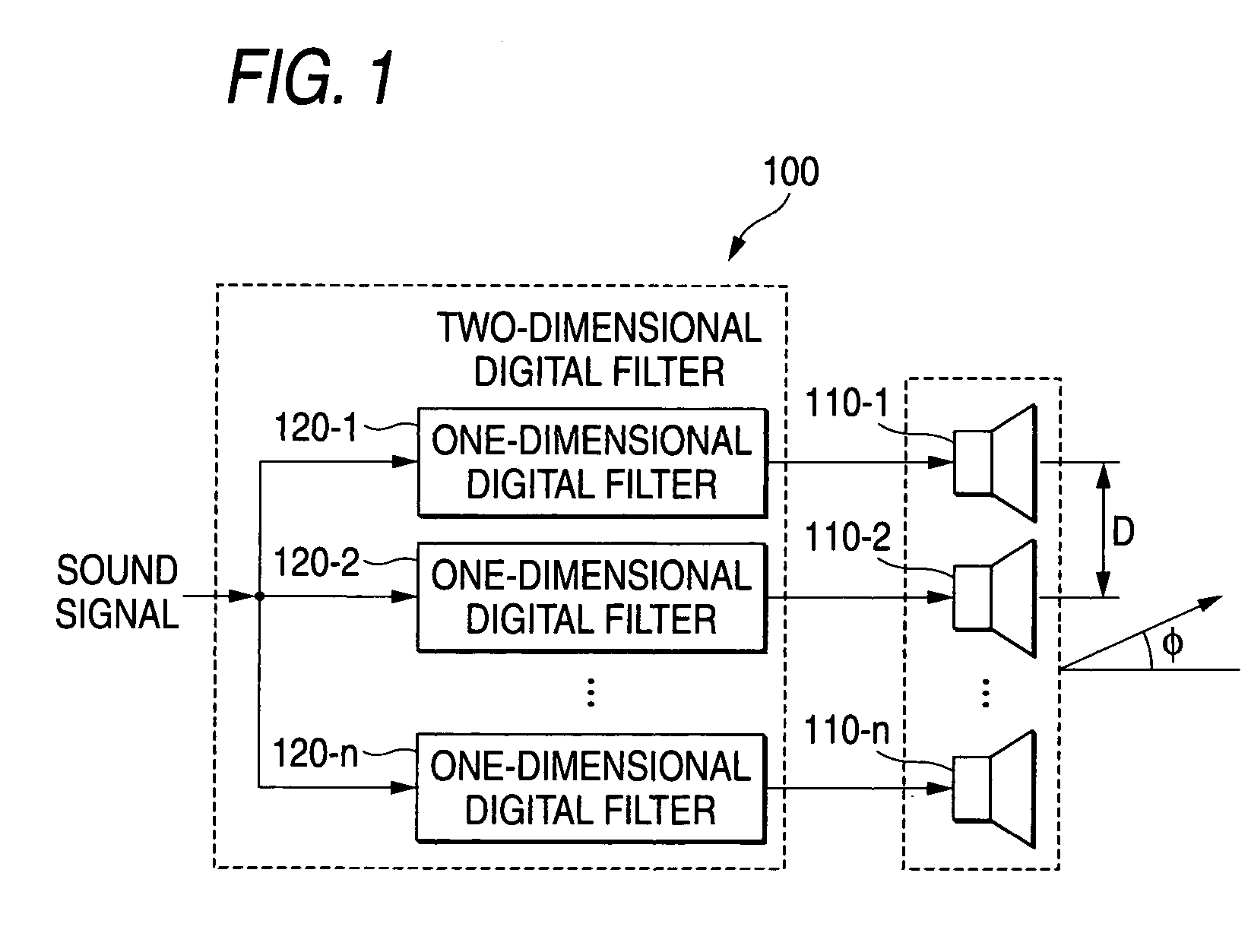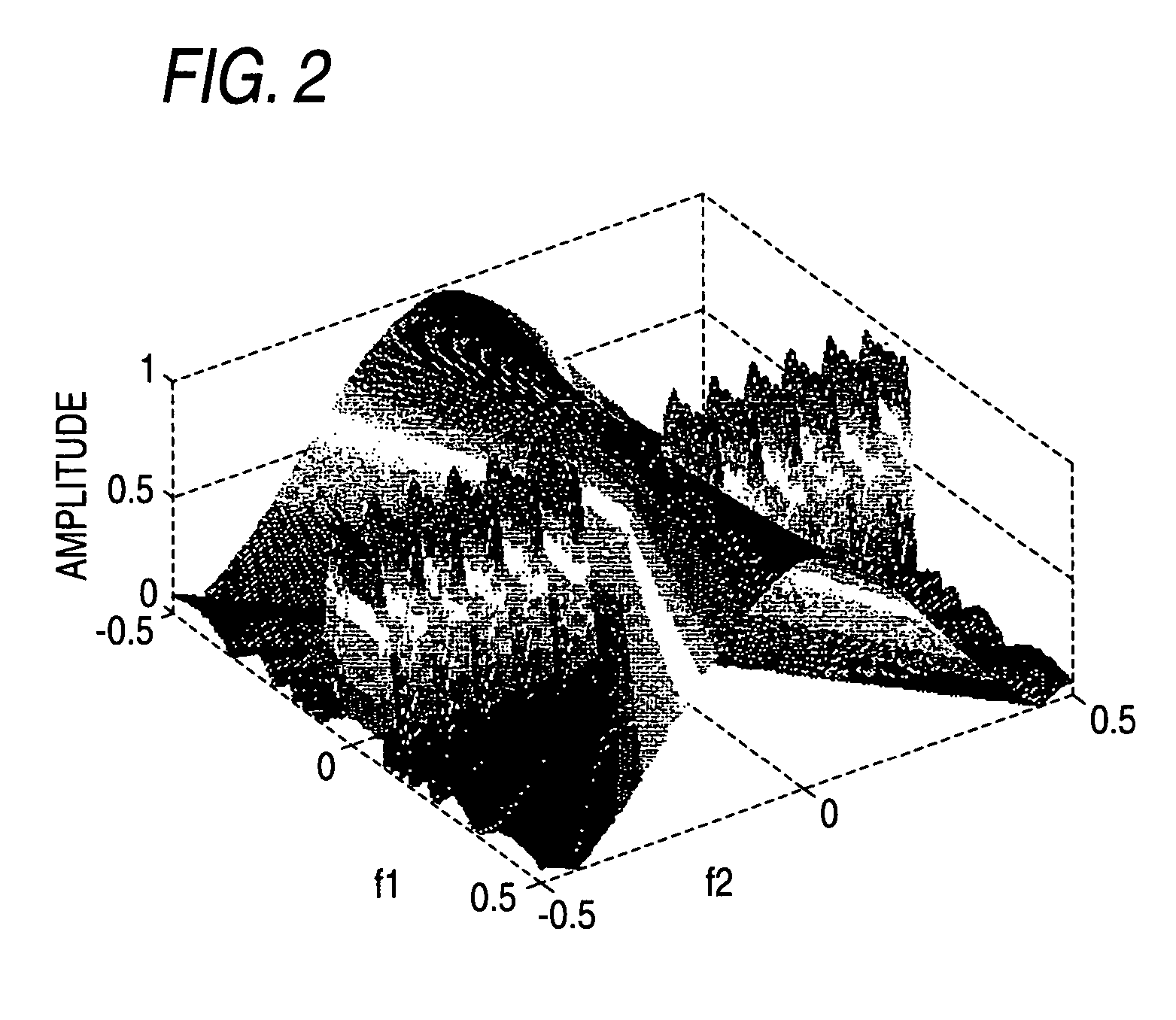Speaker array and microphone array
a technology which is applied in the field of directivity improvement of speaker array and microphone array, can solve the problems of increasing the amplitude level of the side lobes that generate the essentially unnecessary directional characteristic, and the device size of the speaker array and the microphone array is inevitably increased, so as to avoid the increase in the level of the side lobes and improve the directivity of the speaker array and the microphone array in a low frequency rang
- Summary
- Abstract
- Description
- Claims
- Application Information
AI Technical Summary
Benefits of technology
Problems solved by technology
Method used
Image
Examples
first embodiment
A. First Embodiment
(A-1: Configuration)
[0029]FIG. 1 is a block diagram showing an electric configuration of a speaker array 100 according to a first embodiment of the present invention. As shown in FIG. 1, the speaker array 100 has transducers (speakers in the present embodiment) 110-1, 110-2, . . . , 110-n aligned linearly at a predetermined interval (constant interval D in the present embodiment), and one-dimensional digital filters 120-1, 120-2, . . . , 120-n as many as these speakers.
[0030]In the speaker array 100 in FIG. 1, a sound signal (analog signal) supplied from an external sound source (not shown) is converted into digital data (referred to as sound data hereinafter) by an A / D converter (not shown). Then, the sound data are supplied to one-dimensional digital filters 120-i (i: a natural number of 1 to n, this is true of the following) respectively.
[0031]A filter coefficient peculiar to the speaker array according to the present invention is set previously in the one-dime...
second embodiment
B. Second Embodiment
[0063]Then, a microphone array 200 according to a second embodiment of the present invention will be explained hereunder.
[0064]FIG. 12 is a block diagram showing a configurative example of the microphone array 200 according to a second embodiment of the present invention. As apparent from the comparison between FIG. 12 and FIG. 1, a difference of the configuration of the microphone array 200 from the configuration of the speaker array 100 resides in that microphones 210-i (i: the natural number of 1 to n) for outputting the sound signal corresponding to the absorbed voice are provided in place of the speakers 110-i (i: the natural number of 1 to n).
[0065]In the microphone array 200, the sound signal output from the microphones 210-i is converted into the sound data by an A / D converter (not shown), and then input into the one-dimensional digital filters 120-i. Then, the foregoing filtering process is applied to the sound data by respective one-dimensional digital ...
PUM
 Login to View More
Login to View More Abstract
Description
Claims
Application Information
 Login to View More
Login to View More - R&D
- Intellectual Property
- Life Sciences
- Materials
- Tech Scout
- Unparalleled Data Quality
- Higher Quality Content
- 60% Fewer Hallucinations
Browse by: Latest US Patents, China's latest patents, Technical Efficacy Thesaurus, Application Domain, Technology Topic, Popular Technical Reports.
© 2025 PatSnap. All rights reserved.Legal|Privacy policy|Modern Slavery Act Transparency Statement|Sitemap|About US| Contact US: help@patsnap.com



